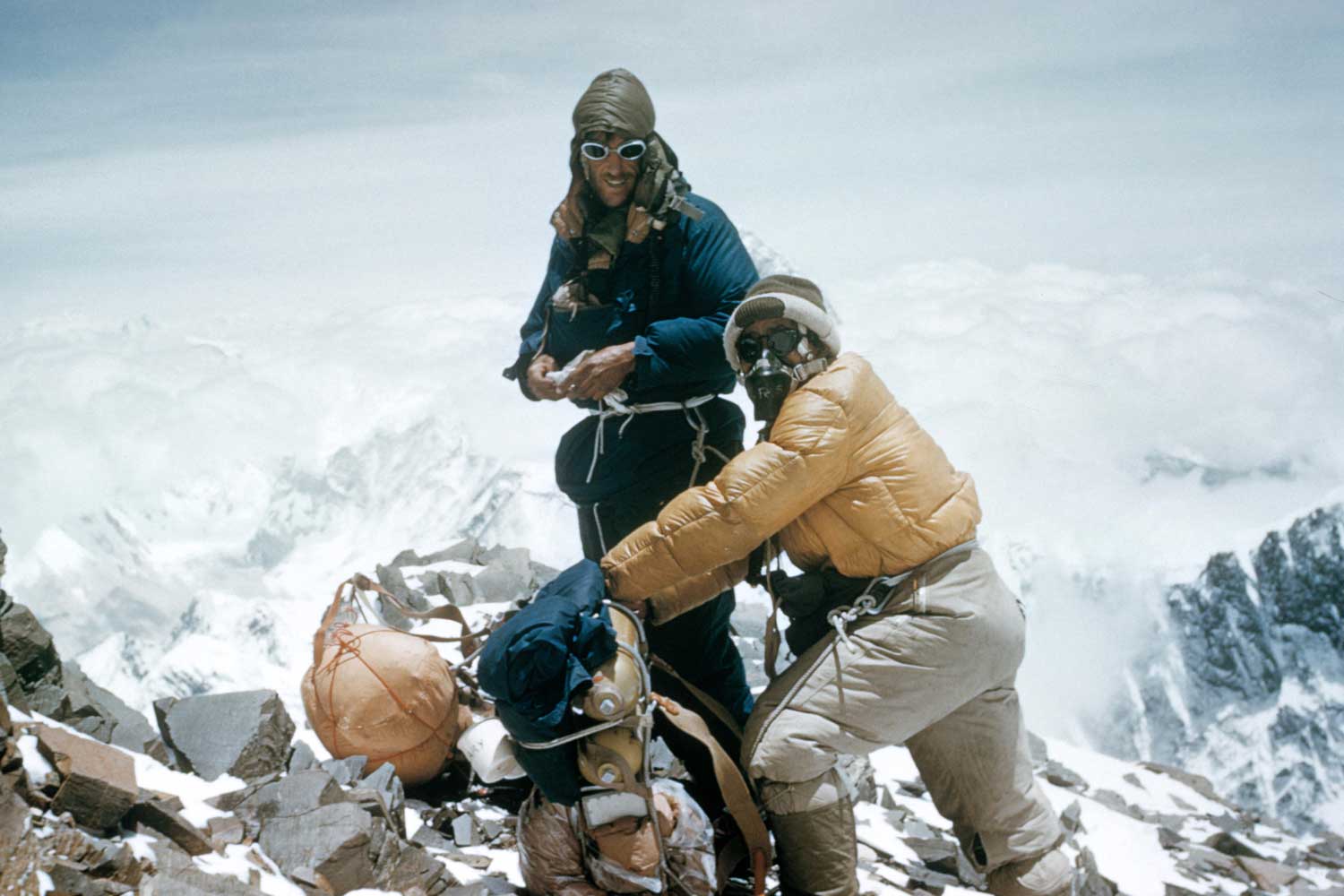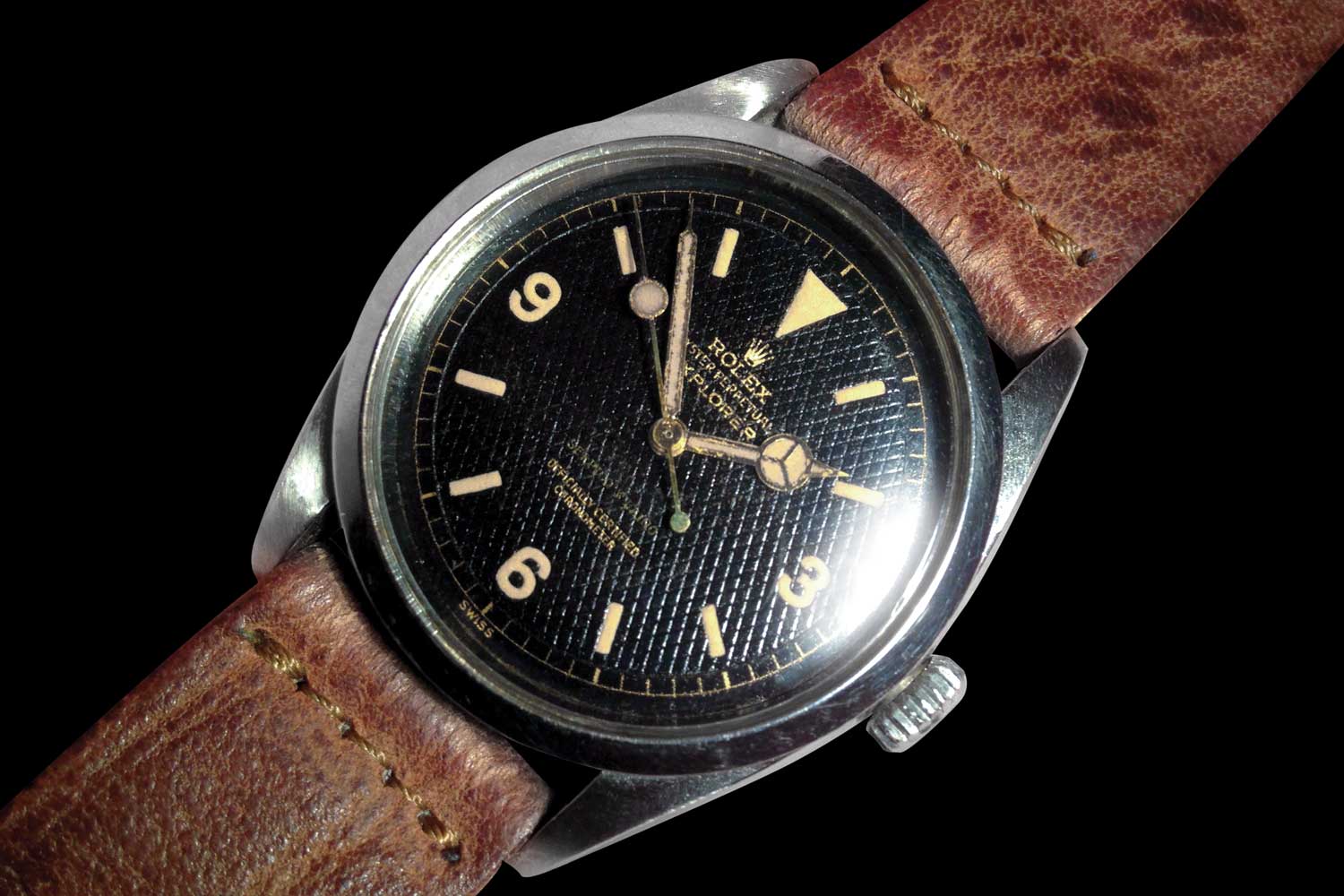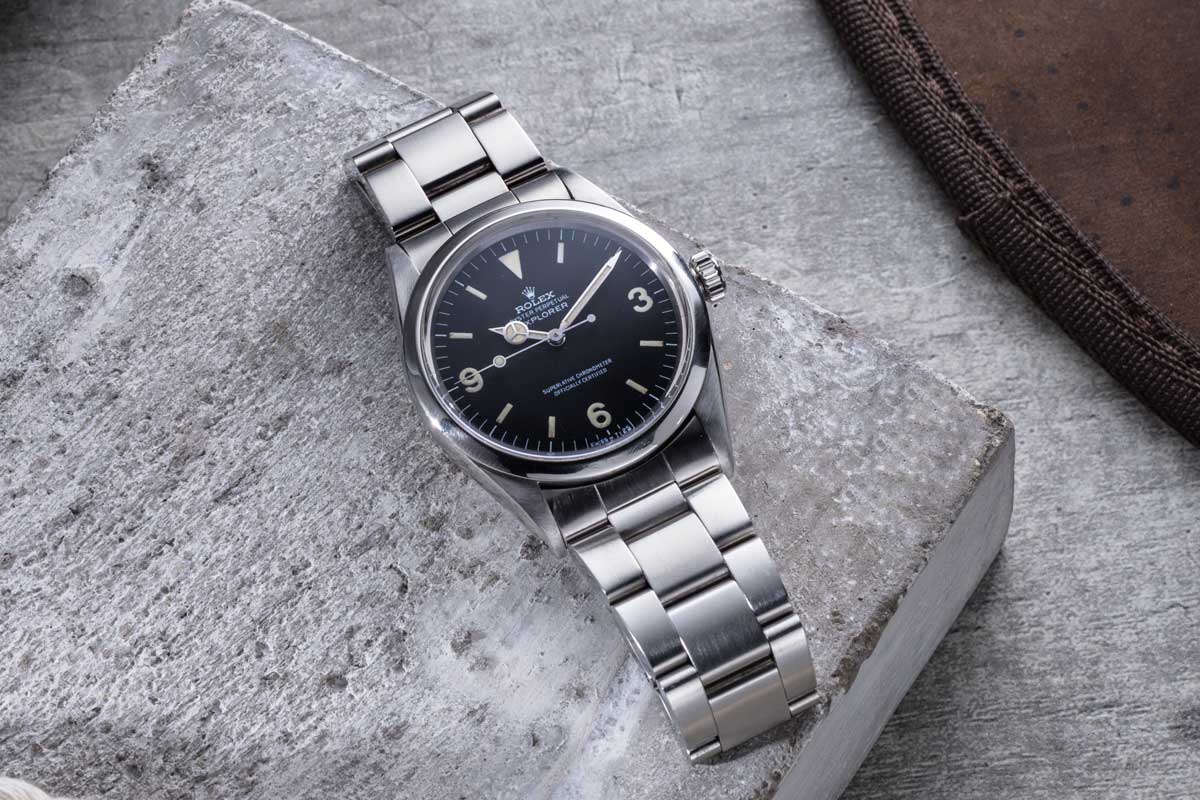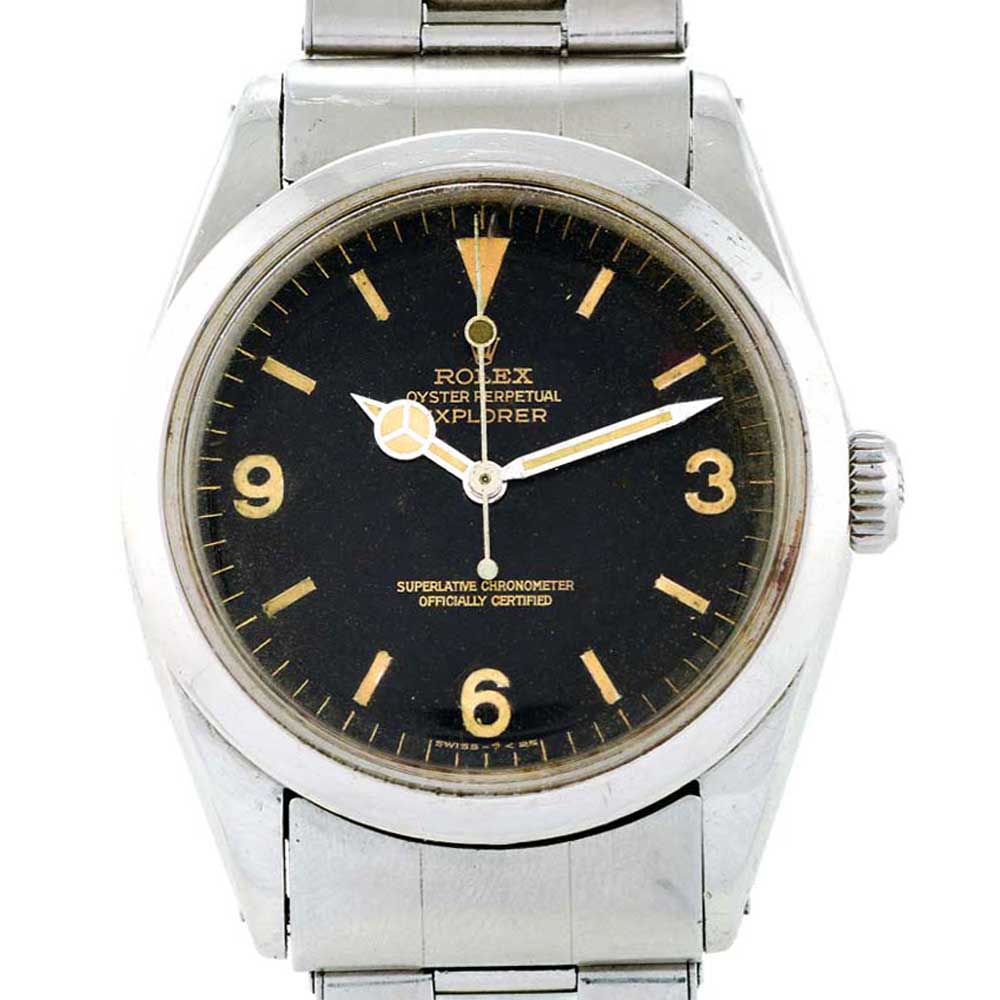Rolex
The Greatest of the Tool Watches: The Rolex Explorer
The Explorer saga began in 1952, at a time when the world’s leading explorers were on the cusp of reaching the highest point on the planet – the peak of Mount Everest. Many attempts had been made and many lives lost, but the British mountaineers of the early 1950s were ultimately the men that would conquer the mighty mountain.

Sir Edmund Hillary and Sherpa Tenzing Norgay ascending Mt. Everest as part of Sir John Hunt’s team

New Zealander Sir Edmund Hillary and Tenzing Norgay, a Nepali Sherpa climber, where the first successful pair from John Hunt's British expedition, and the first in the world to have reached the summit of Mt. Everest at 11:30 local time on 29 May 1953 via the South Col route
The 6350 was actually the first reference to wear the text – EXPLORER! To many collectors this watch is the first Explorer proper. Collectors particularly look for the very rare version with a honeycomb dial; it is truly stunning!

A rare ref. 6350 with honeycomb gilt dial customised for Serpico Y Laino, a Rolex retailer in Caracas, Venezuela

An early 1970s matte so-called 'Frog Foot' Rolex Explorer ref.1016 (©Revolution)

The Rolex Explorer ref. 1016 with gilt dial










